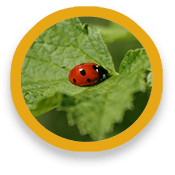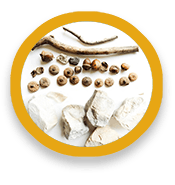SCIENCE EXPERIMENTS FOR KIDS
HOW TO MAKE AN INVERTEBRATE HOTEL
Teach your kids the difference between a roach motel and a backyard bug bungalow


Tested, edited & approved by:
Róisín Altreuter,
Science Educator & Sustainability Coordinator
This animal is not on exhibit in the habitats. It is one of our Animal Ambassadors and is used in public and school programs.
If the only place your kids have seen invertebrates is in the roach trap in your kitchen, this is the science project for you. In this fun experiment, you’ll work with your child to engineer a cardboard hotel full of tiny stick and leaf rooms. Leave it outside and see who moves in!
I left an invertebrate hotel on my porch for several months until one morning I woke up and found it had been picked apart! It seems my neighborhood raccoons also figured out it was a fun place to find invertebrates.
GATHER THIS:
- Small cardboard box (like a granola bar box)
- Some or all of the following: corks, toilet paper tube, cardboard scraps, paper straws newspaper, brown packing paper
*Sustainability Note: Use materials like paper or cardboard that will easily break down if they fall out of your box outside. Avoid using plastic items.
THEN DO THIS:
- Go for a walk near your home with your child and bring along a bag or bin to collect materials in. As you walk, work together to collect a few small sticks, dried leaves, pieces of bark, small stones, and similar items. Pause to look underneath things like rocks, big sticks or pieces of bark. Can you find any invertebrates hiding?
- Lay out all of your materials (both those collected outside, and other things suggested above).
- To make your invertebrate hotel, stuff your small cardboard box with some of each of your materials in a way that creates a lot of small spaces for small critters to hide in. Let your child try different ideas to get the materials to stay in the box without spilling out. Challenge them to figure it out without tape or glue!
- Place your invertebrate hotel outside.
- Check on it once a week to see who has moved in! Consider encouraging your child to modify their design (like create smaller or larger empty spaces) after a week or two and see if it changes how many and what kind of invertebrates move in.
ASK THIS:
- Where do small animals like pill bugs like to live outside?
- What idea can we try to get the materials to stay in the box without glue or tape?
- What types of animals do you think will use the hotel?
- Do you think the animals will be the same every time we check?
- Where should we put the hotel to attract the most residents?
WHAT IS HAPPENING?
Invertebrates, animals without a backbone, are the most numerous creatures on planet earth! This diverse group includes everything from flies and spiders to clams and giant squid. Land-based (terrestrial) invertebrates are often mistakenly referred to as bugs. However, in biology, “bug” is actually a very specific group called Hemiptera within the insect class. Terrestrial invertebrates are a great introduction to observing nature in your own backyard because they really are all around! Plus, who doesn’t love roly poly bugs!?
WHAT THIS TEACHES:
Skills: Observation, engineering design process, and problem solving
Themes: Backyard biology, habitats, invertebrates, engineering
Join the CuriOdyssey Community
LOCATION
1651 Coyote Point Drive
San Mateo, CA 94401
Ohlone Land Acknowledgement
650-342-7755
info@curiodyssey.org
CuriOdyssey is a 501(c)(3) non-profit, Tax ID 94-1262434


